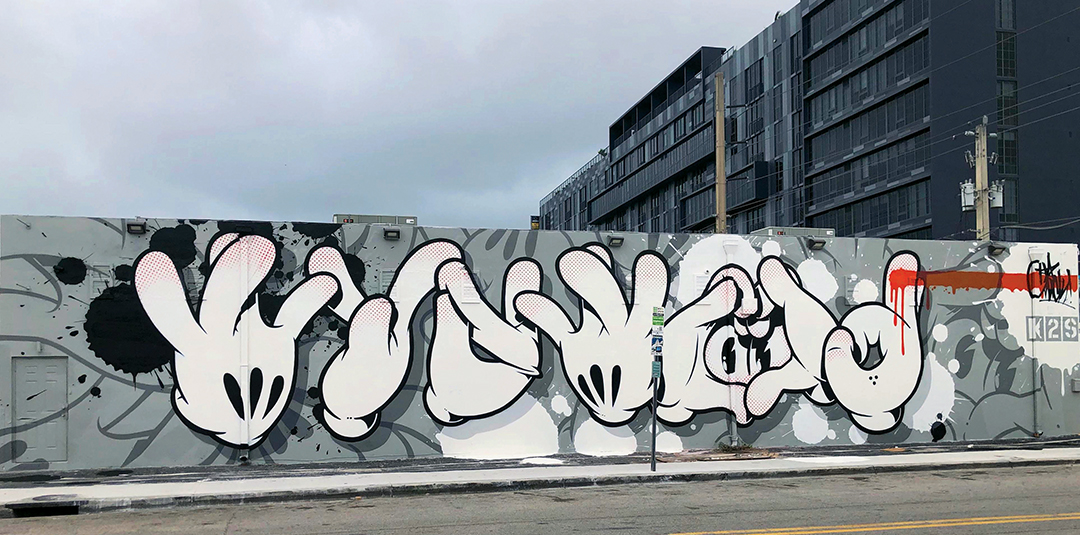
Slick, a native of Hawaii, painted this mural on the exterior of the Museum of Graffiti in Miami.
Photo courtesy Museum of Grafitti.
Its earliest practitioners were considered criminals, but now the work of some graffiti artists hangs in the nation’s most prestigious museums.
After society’s initial outrage over acts of vandalism in the name of creativity, art enthusiasts begrudgingly acknowledged that some wayward, urban painters were genuinely gifted. Over time, graffiti and street art earned a place in prestigious collections, private galleries and museums like the Museum of
Contemporary Art (MOCA) in Los Angeles and Whitney Museum of American Art in New York.
While graffiti is often viewed as an American-born genre, Michael Rooks, a curator of modern and contemporary art at Atlanta’s High Museum of Art, provides some historical context. “Graffiti and street art have their origins in the history of 20th century art — from Dada wherein text replaced image to inveigh against WWI on the streets of Zürich, to the Mexican muralist movement’s large-scale murals in post-revolution Mexico City, to Les Affichistes artists whose affiches lacérées (layers of torn posters and advertisements) were literally sourced from the streets and walls of post-WWII Paris.”
The evolution of American street art has been well documented in L.A. and New York, but the acceptance of this form of artistic expression has also occurred in Philadelphia, Miami, Chicago, and San Francisco.
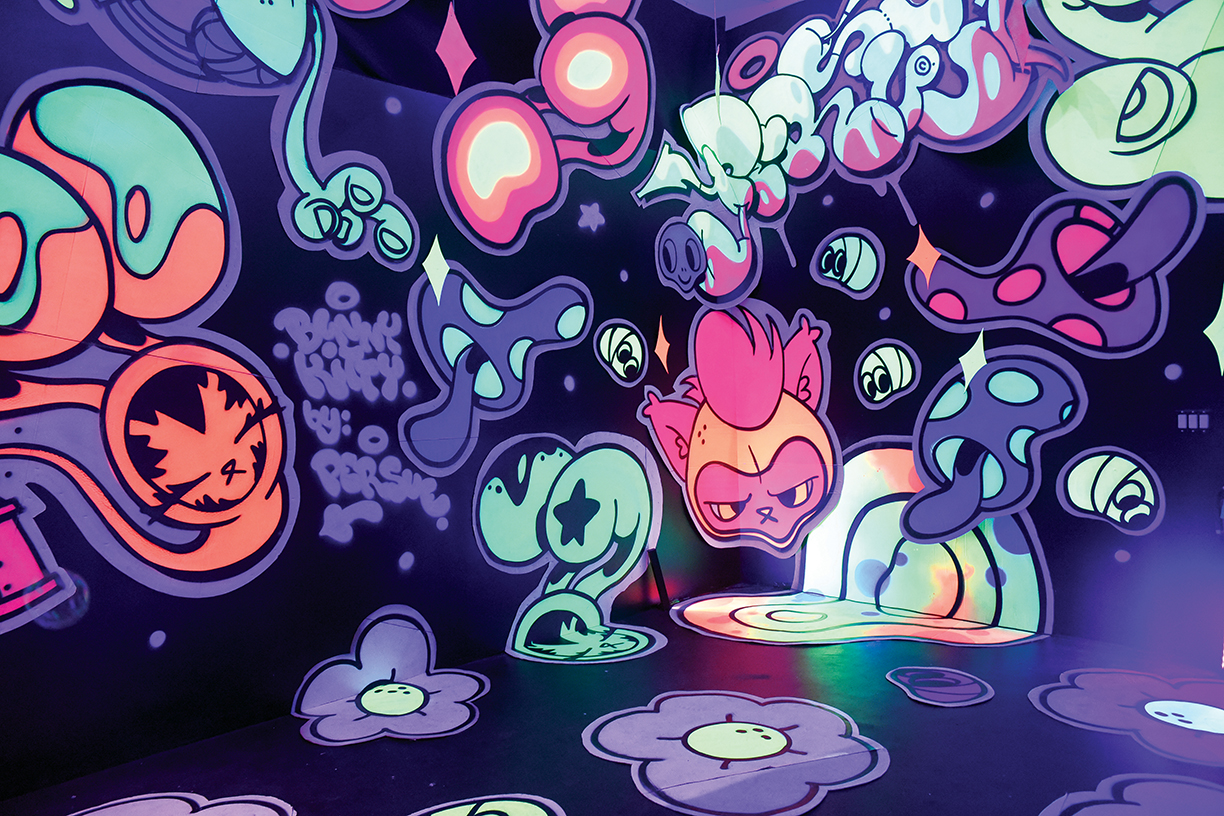
“Bunny Kitty’s Dreamstate Room” is a vibrant, playful work from artist Persue.
Photo courtesy Museum of Graffiti.
Some street artists are commissioned as muralists, a transition that monetizes and legitimizes their work, before eventually being discovered by curators. Ultimately, gallery representation leads to their art appearing in chic restaurants, hotels and private collections. Artists like Keith Haring, Jean-Michel Basquiat and Shepard Fairey — all once confined to the fringes of the art world — became creative celebrities. In L.A., the exclusive fashion boutique of Elyse Walker features artwork by RETNA, one of the most prominent local street artists, while superchef David Chang hangs the work of David Choe in Majordomo, his popular downtown restaurant. The city’s Mayfair Hotel features the work of a different street artist on every floor — resulting in diverse visual experiences for guests — and is a tribute to the depth of talent in the region.
The historic Mayfair, site of the first post-Academy Awards party in 1929, has been transformed into a trendy setting showcasing street art, curated by artist-in-residence Kelly “RISK” Graval. The Louisiana-born artist became one of L.A.’s most influential graffiti stylists and was among the pioneering artists to transition from the street to the gallery, as well as entering the worlds of fashion design and music video.
RISK’s own work is represented by a Buddha-inspired installation on the second floor and one of his murals will eventually soar above the 15th-floor pool deck. “I selected my “Metallic Tissue” series, which consists of a body of work that I paint on panels built out of repurposed spray cans,” reports RISK, who states, “They’re my imprint on society as an artist, my DNA.” He also installed some of his unique neon work in the lobby, which suits the vintage of the building. Overall, nearly 100 pieces throughout the hotel represent the diversity of L.A.-based graffiti artists and muralists like DEFER, Billy Morrison and Shepard Fairey, whose breakout work was the Barack Obama “Hope” imagery from the 2008 presidential campaign.
“There was a time when graffiti artists were a small underground subculture,” explains RISK, but adds, “The powerfully dynamic art sparked a younger generation and it exploded.” He acknowledges that street art festivals and museum exhibits helped elevate the genre within the polite corridors of the art world, but that true recognition has been stubborn.

Neon work from RISK, the artist-in-residence at The Mayfair Hotel in L.A. Photo courtesy the Mayfair Hotel.
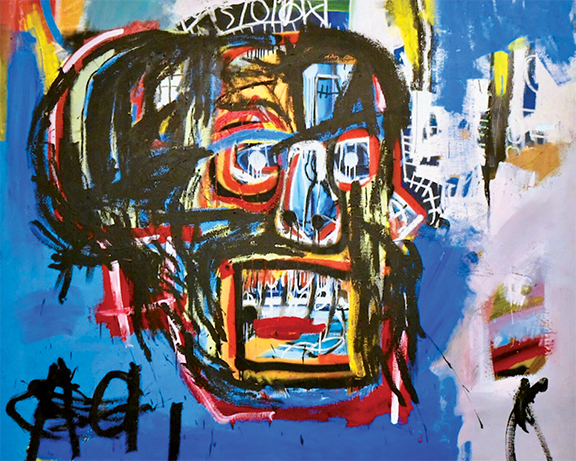
This untitled painting of artist Jean-Michel Basquiat sold for $110.5 million at auction. Photo courtesy Museum of Graffiti.
“It was time for a new generation to take over. The old guard and practices of art began to change,” insists RISK, who suggests progressive hoteliers are helping idiosyncratic artists to find an audience. “Hotel art was becoming stale, kind of like Muzak in elevators in the ’80s, and needed a new approach,” says the veteran artist. “Boutique hotels like The Mayfair are ahead of the curve and breathe fresh air into an exciting future for art, artists, and art enthusiasts,” says RISK.
Roger Gastman, an urban anthropologist and historian, is a leading authority on street art who counts The History of American Graffiti and Street World: Urban Art and Culture from Five Continents among his 50 books. Gastman remembers his own discovery of self-expression — through a spray paint can in the early 1990s — as a defining moment in his young life.
Gastman, whose first book, Free Agents: A History of Washington, D.C. Graffiti, documented the local culture he experienced in his youth, reports there is a distinction between graffiti and street art. “Graffiti is very name-based, very ego-driven, while street art is more image-based and involves additional tools and techniques,” says Gastman, but notes that both have their roots in vandalism. “Street art is a safer name and is more digestible to the public, but graffiti and street art are kissing cousins on the same playing field,” he muses.
“So much of this work is fantastic and deserves to be seen in a different light, collected and respected,” says Gastman, who laments, “A majority of galleries and museums still don’t accept this kind of art, look at it seriously or believe it should be shown.” Demographics, however, are driving attitudes, suggests Gastman. “People in their 30s and 40s grew up with graffiti, tattooing and skateboarding — it’s everywhere, in fashion, music and advertising — and it resonates with them.”
Last year, Gastman spearheaded the New York edition of Beyond the Streets, a massive 100,000-square-foot exhibition of prominent graffiti artists in Brooklyn, following a similar event in L.A. in 2018. “We basically built our own museum and 200,000 people walked through the doors,” he explains, adding, “It showcased graffiti and street artists, giving them respect and presenting their history in the proper light.”
Miami, whose Wynwood Arts District is defined by vibrant, multicultural murals, is a city with a strong tradition of street art, and its Museum of Graffiti pays homage to the approachable medium. Museum co-founder Allison Freidin explains, “Our goal is to celebrate a group of artists previously marginalized because of the stigma associated with graffiti,” and reports the Miami institution is the only one in the world exclusively dedicated to graffiti art. “Previously, there was no place to learn about these artists,” she adds.
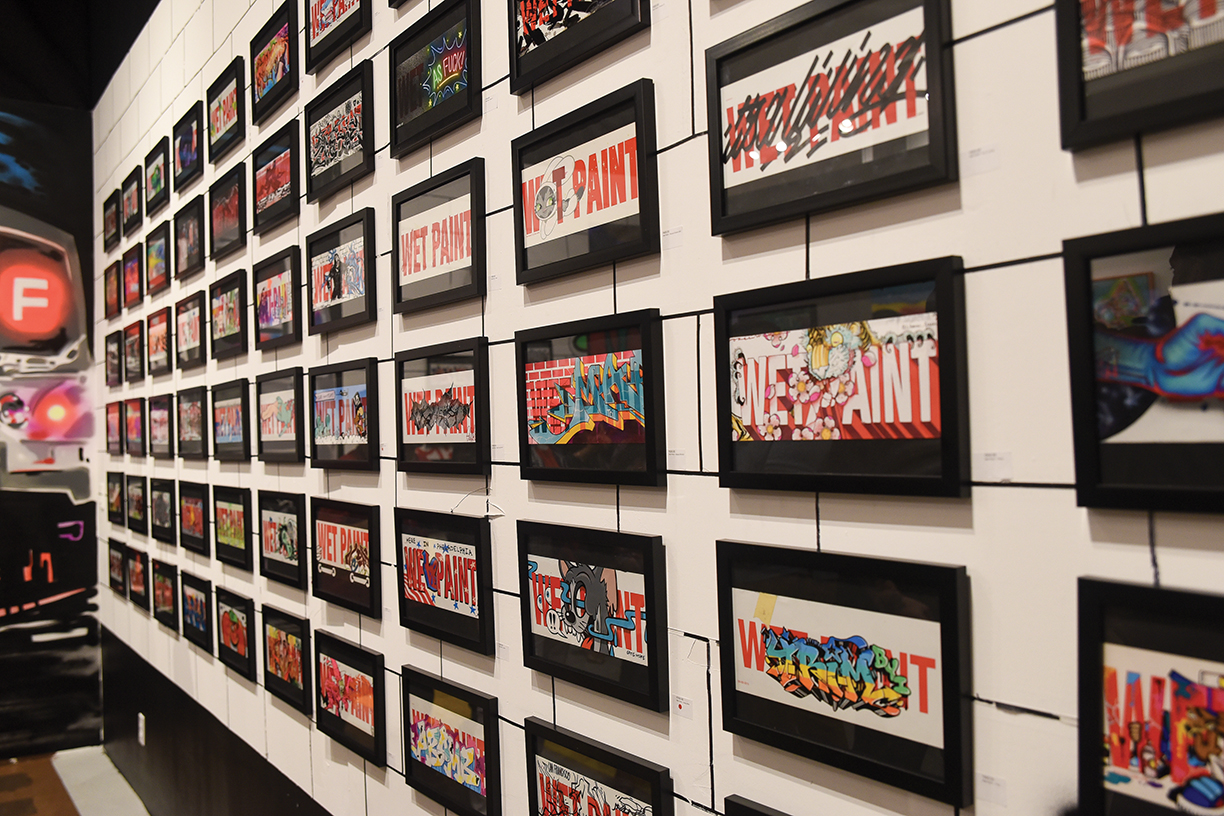
Above: The “Wet Paint” exhibit at the Museum of Graffiti in Miami, from artist Persue. Photo courtesy Museum of Graffiti.
At Right: “Party Felix” by Seen, one of many artists showcased at L.A.’s Mayfair Hotel. Photo courtesy the Mayfair Hotel.
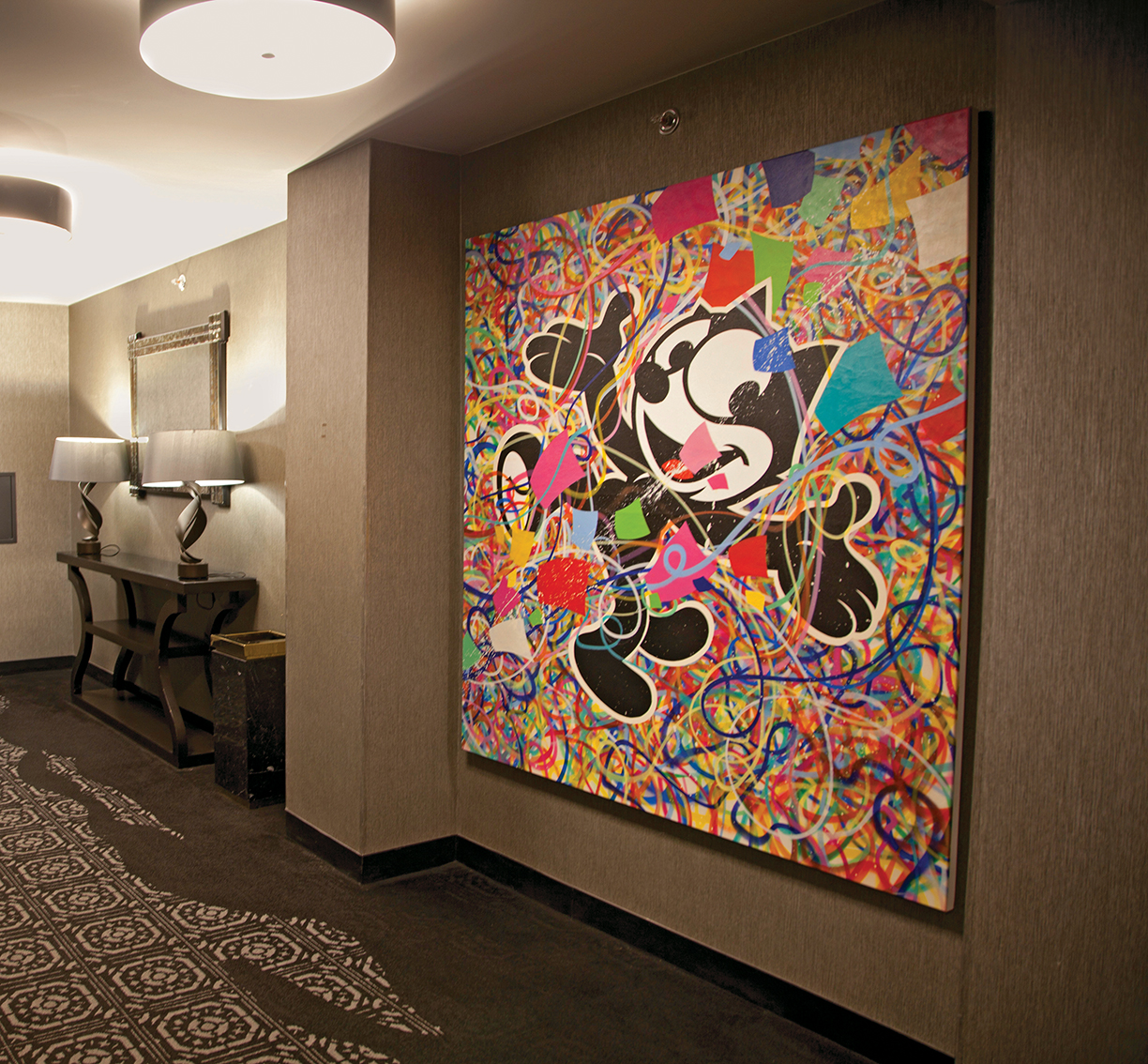
Explaining its location in a former shoe warehouse in Wynwood, Freidin reports, “The district’s relevance in the past 10 years is a product of the graffiti art that transformed a sleepy industrial neighborhood into the world-class arts destination it has become,” noting the windowless warehouses made ideal canvases for street artists. The Museum of Graffiti’s own building is entirely wrapped in 14 different murals by acclaimed local and international artists like Shoe, EZO and Abstrk.
The museum’s interior galleries feature rotating exhibits such as a recent compelling vignette from artist Persue, who famously removed the “Wet Paint” signs that New York City transit workers used to tape to subway cars after painting over graffiti art. Persue sent more than 70 of those very placards to artists around the world to use as canvases, all of which were incorporated into an exhibit whose physical design resembled a New York subway station platform.
Freidin explains that Miami’s graffiti art movement began in the early 1980s when some youth who got into trouble in New York were sent to South Florida to live with grandmothers or aunts. Insisting there is no way to repress the energies of an artist, Freidin reports, “The art erupted like a vengeance.”
The museum co-founder applauds the success of local graffiti artists like José Parlá, whose work moved from the streets of Miami to a mural inside Manhattan’s One World Trade Center, as well as multiple museum exhibitions and commissions in Tokyo, London and Havana. “He was immensely talented and continued to put in the work despite the stigma associated with graffiti art as vandalism,” says Freidin, who adds, “He’s probably one of the biggest names in contemporary art in the world.”
It was not easy for some museum curators to persuade their boards of directors that people previously labeled as vandals should be showcased in world-class fine arts facilities, but Freidin maintains society has evolved. She offers the former criminalization of marijuana as an analogy, citing its progression from disdain to broad acceptance. “It takes forward-thinking arts enthusiasts to take a risk,” and reports major corporations are hiring these artists as creative directors. “They recognize the power of this art,” says Freidin.
Robert Michael Provenzano, professionally known as CES, is a leading graffiti stylist whose signature aesthetic is now influencing the generation of artists currently emerging from the streets. His art, which began almost 40 years ago in his native Bronx, repeatedly got him into trouble as a young man, but after being flown to Munich to demonstrate his craft at a museum he realized there was a market for his skills. “My friends and I used to have to steal supplies, but now I’m a sponsored artist by a paint company in Barcelona,” says CES of how attitudes toward graffiti art have changed.
CES has since earned commissions from Nike and Palms Casino Resort in Las Vegas, in addition to collaborating on a mural adjacent to Miami’s Museum of Graffiti, where he was recently headlined. He finds it ironic that the artistic expression that was so strongly discouraged when he was a teenager is now a source of pride for his family. “I had no idea that if I stuck with it all those years, the whole world was gonna dig it,” reports CES.
The High Museum’s Michael Rooks notes, “The migration of some graf artists into the mainstream via museum collections and exhibitions underscores a familiarity with the language of the street that is widely recognized among urban audiences, as well as the influential role it has on global visual culture today.” He adds, “A fulcrum point in the migration from the street to the museum has to do with an artist’s knowledge and understanding of this legacy and ability to speak with urgency and artistry to contemporaneity.”
The ultimate measure of acceptance of art is the monetary value it commands in the marketplace. In 2017, an untitled work of Jean-Michel Basquiat, who began his career spray-painting walls in Lower Manhattan, sold for $110.5 million to a Japanese billionaire at auction, eclipsing his own personal record of $57.3 million.
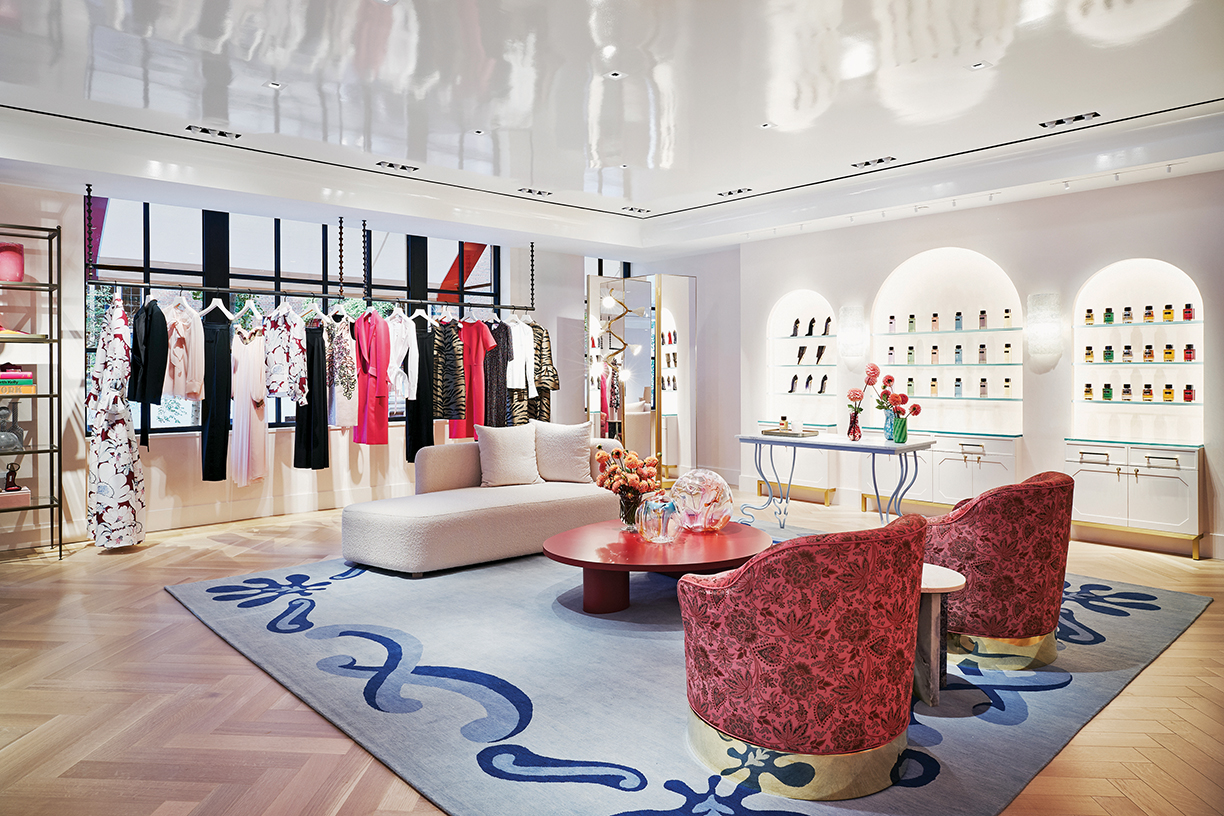
Photos courtesy Katrien Van Der Schueren.
Katrien Van Der Schueren is the founder and creative visionary behind Voila! Creative Studio, a visual laboratory where she envisions, creates and fabricates a full range of bespoke fine art, objects, furnishings, lighting, event and stage sets, and accessories.
In the grand scheme of her career, designer/artist Katrien Van Der Schueren says that her move to America in 2002, specifically Los Angeles, was the first main challenge she met that led her to where she is now. With her experience working in a variety of fields, from the European Commission to marketing, she says that she felt obliged to reinvent herself and that this new world gave her “the opportunity and the audacity to follow a new path.”
Through perseverance, courage and a “huge learning curve,” she remains the leader of Voila!, known as a visual laboratory with endless possibilities. “We are storytellers and translate it into material form. We are creative problem solvers that make the project happen,” says Van Der Schueren.
What about art and design draws you into doing it every day?
It’s an intuitive thing, I think.… I didn’t really think it through. It just felt natural to me and I followed my path of learning and exploring and fine tuning the direction as I went along.
I love working and exploring materials and their possibilities. I love discovering new textures, new techniques, new colors, new color combinations, new designs, new styles … and in my job the learning and discovery is endless. I love the storytelling [aspect] when we work on projects. Imagining the environment pieces will go to, who will use it, look at it and how to tell that story and make that story happen with shapes and form and materials.
What influence, if any, do you get from living in California?
So many things. California is such a melting pot of cultures providing so many creative impulses on a daily basis. There are so many different influences to draw from here that it’s hard not to get inspired every day. I still strongly feel like an immigrant on Discovery Road.
Since we arrived in LA, the city has evolved so much. It breathes artistic energy in so many domains, from food to music to artisanal crafts to high-end design. Nature is another big part of California’s inspiration. The ocean, for example, I mean who can resist its magic? And what about the vastness of land in between places when you drive out of the city and what about the evenness of the light and its brightn
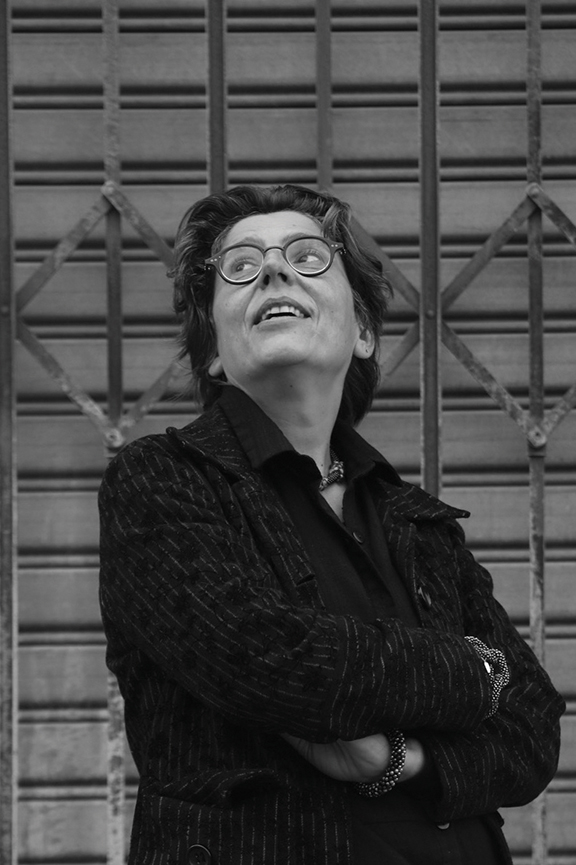
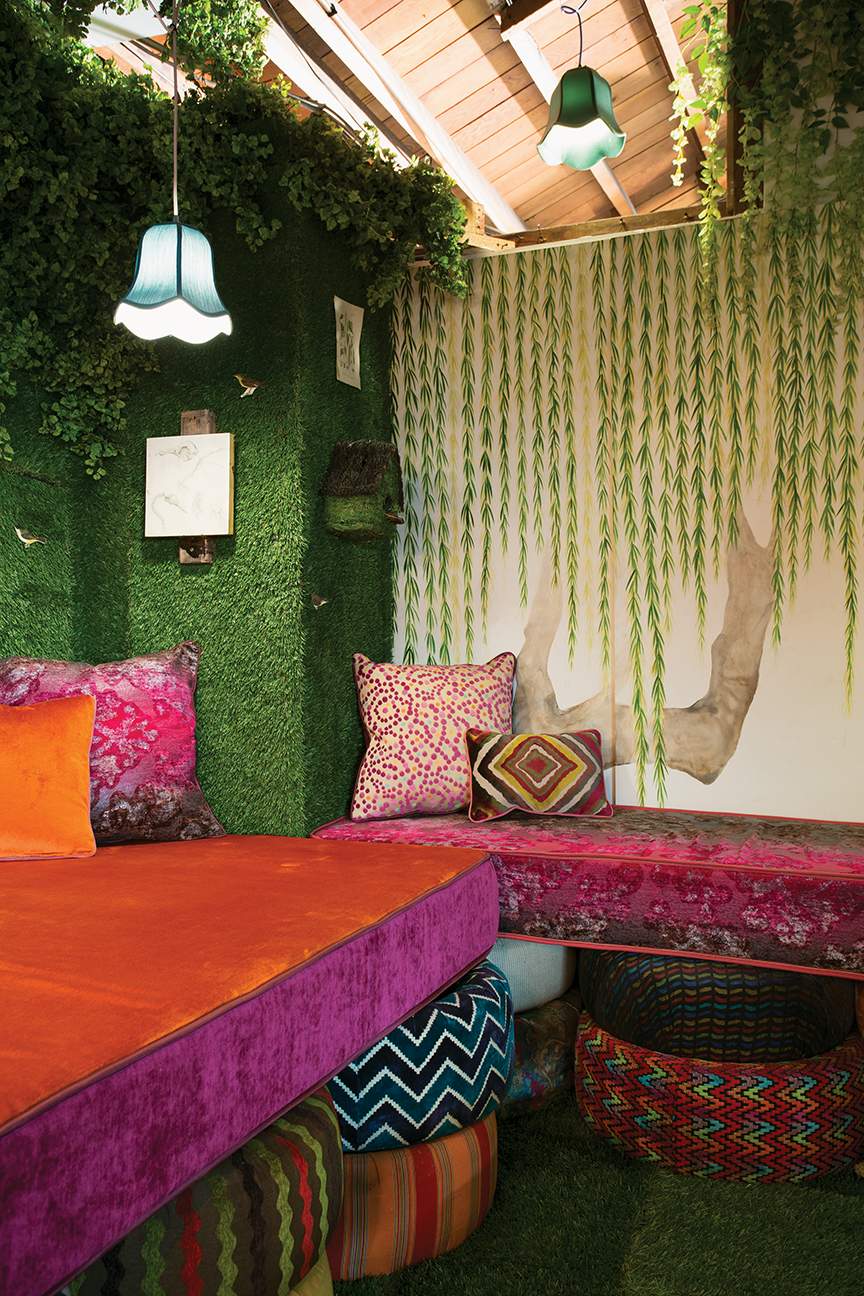
To keep inspiration alive, Van Der Schueren says she needs to connect with the outdoors, whether it’s taking a drive, traveling abroad or spending time with her family outside the studio, “so when I step back in I feel re-energized and spin my wheels on the right things.”
What do you usually draw inspiration from?
Literally everything or anything that kind of stops me in my tracks. That can be the shape of a leaf in the garden, a lyric or beat in a song, a shade of a ceramic cup, my kids’ world, an art installation, a set of a movie I am watching. Anything that stops me and draws my attention.
Tell me about Voila!’s conception and how it operates today. What was the original mission/goal of the studio?
I started as a picker. As that’s where it intuitively felt right for me to start. Learning styles, periods, et cetera. Then my intuition just led me to start making, first by combining finds and turning them into either art or furniture. Basically, I do have a lot of something I found and it inspired me to make something with it. Then I wanted to learn more techniques and what I could do with materials, started hiring people and learning about that process and its ups and downs with growing pains. Clients would ask me to custom make furniture and art for them and I gradually learned what I liked and disliked, and it all evolved like that with some very risky steps in between, just out of some gut feeling that that was the next step to take. A lot of mistakes on the way, of course, getting back up and moving forward towards a clearer direction.
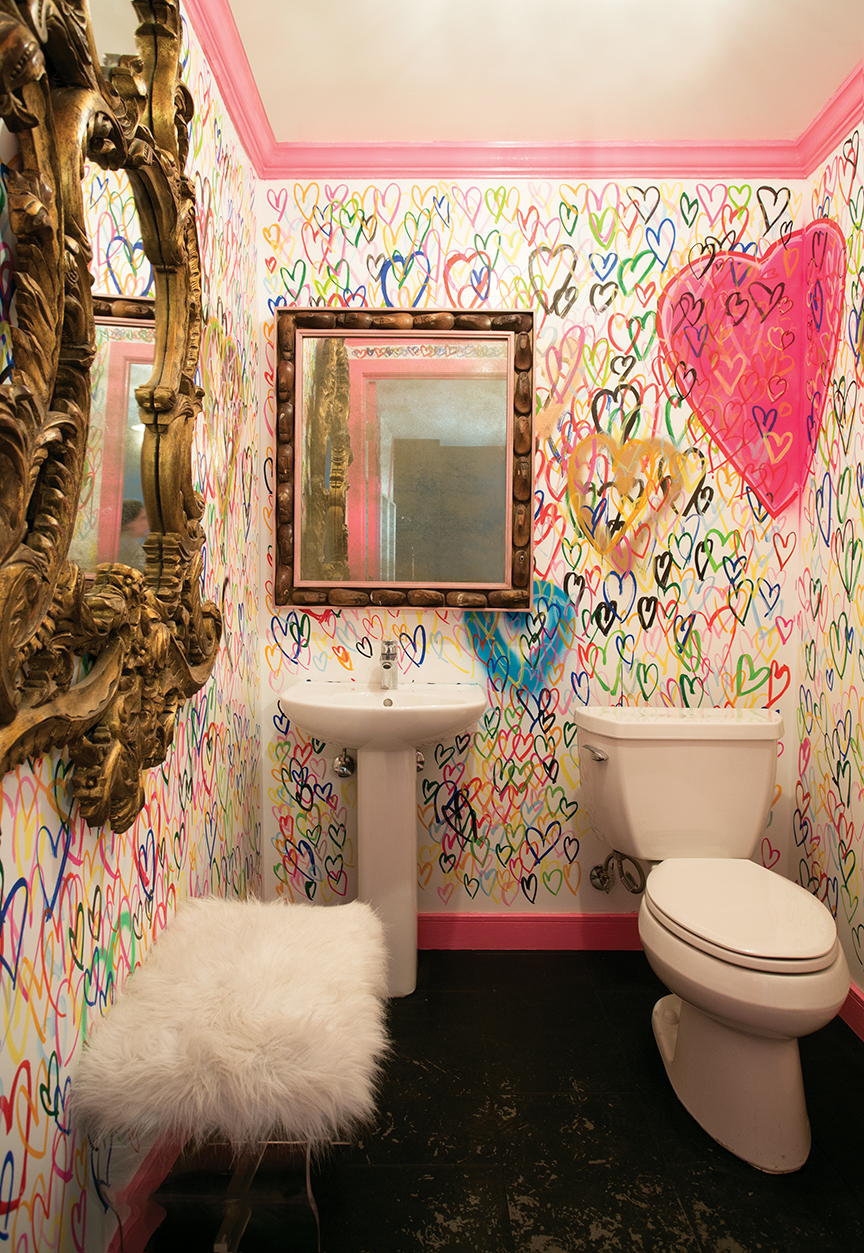
When it comes to designing art for a project, what is the most important element you have to remember? Does this differ depending on the type of space you are working in?
Each project is its own. When we start an art project, I look at the story first. The visual story (the interior design choices and the environment and architecture) as well as the audience it’s for. Those parameters will define the art choices. Of course, the location and the environmental conditions are often key as well when it comes down to choosing the materials to work in, and the type of use will also define possibilities.
Is there a piece of art in your
own home that you would never consider selling?
Almost all of them. The pieces I have at home are part of the fabric of my life. I am emotionally connected to them and they make a lot of sense in my home visually.
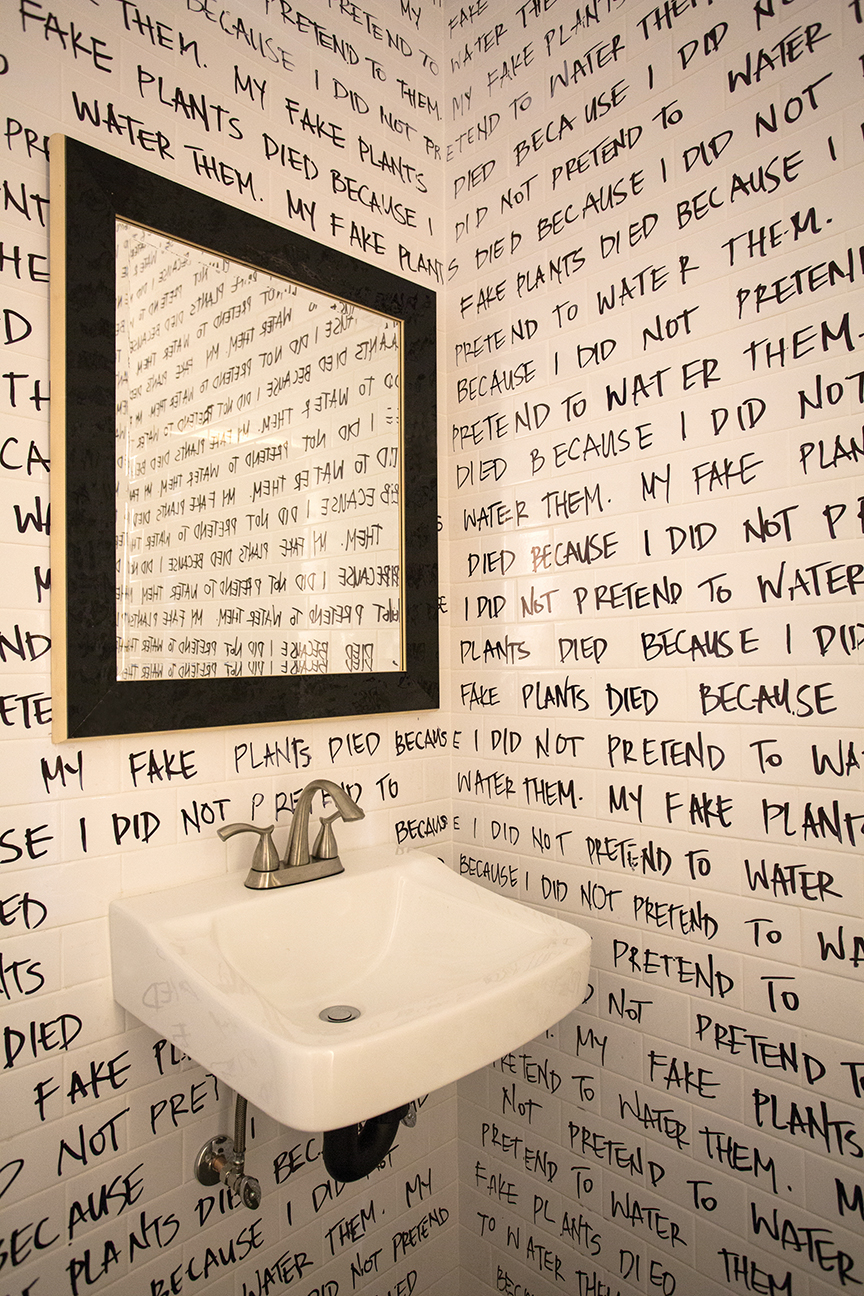
What would be your dream project or a piece you’ve always wanted to start (or finish)?
Oh boy. A dream project would be that I get unconditional creative freedom and unlimited budget to design and fabricate all the art, and custom-make all the furniture for a unique experiential boutique hotel that also has a music venue on the premises as well as some original and unique culinary opportunities (restaurants/bars, et cetera).
What advice would you give to someone pursuing a career in art or design?
Follow your gut feeling. Only by working your way through you can achieve results and fine-tune direction. Be you
Zany patterns. Punchy palettes. Combinations of materials from the concrete to metallic.
As Claire Elsworth of Claire Elsworth Design notes, the eccentric spirit of Maximalism is both magical and rebellious. It encourages traditional rules of design to be broken and conventional boundaries to be overstepped. From patterned wallpapers and dark paint to a velvet sofa with an eclectic mix of textures pillows, the goal is to be courageous in your design, and to love the “more” aesthetic.
“‘More’ is a love and appreciation of pattern, color, collection and curation,” Elsworth notes, “with a sheer joy of fusing, contrasting, styling and layering all that gloriousness together.”
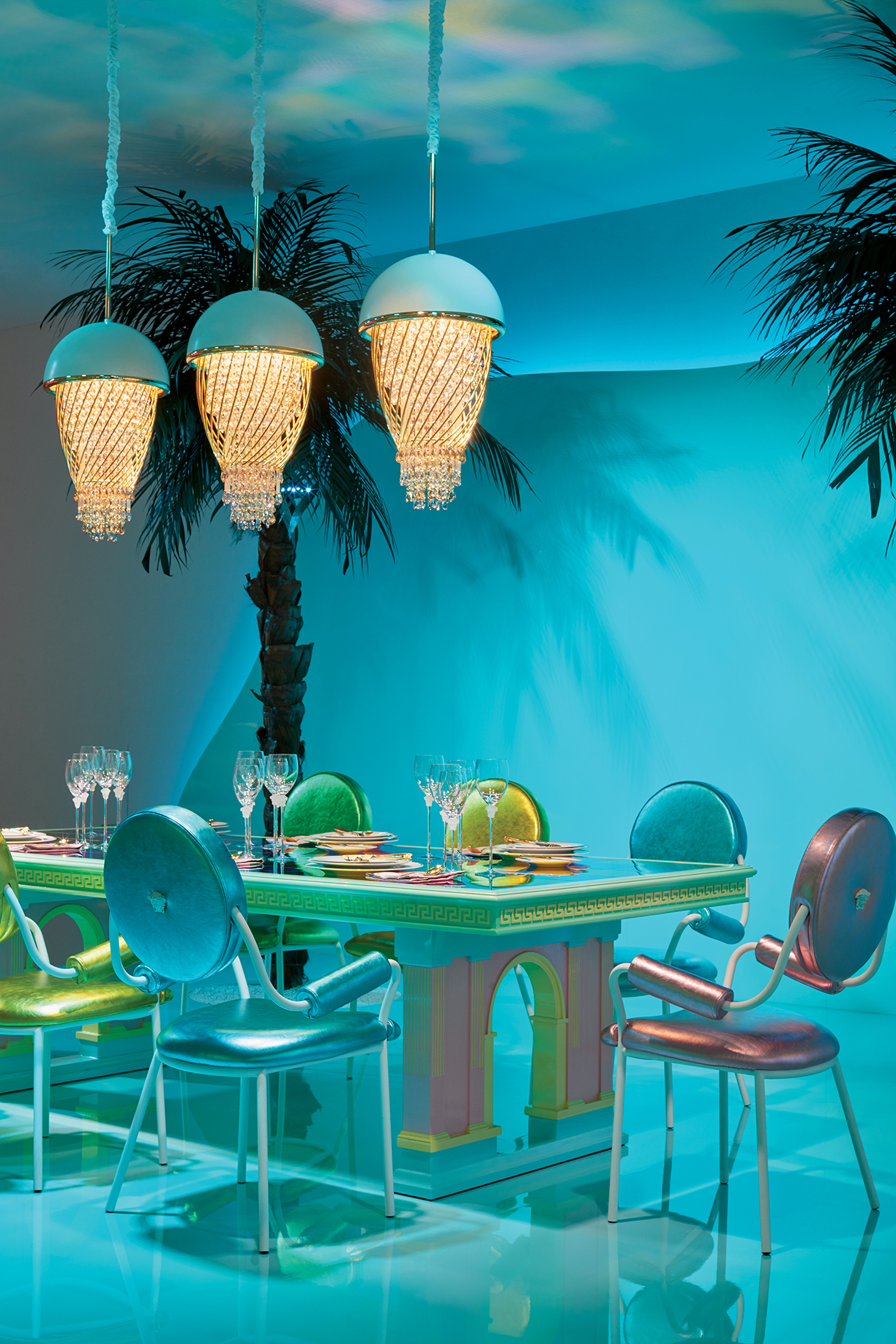
Sasha Bikoff
Photos courtesy Sasha Bikoff.
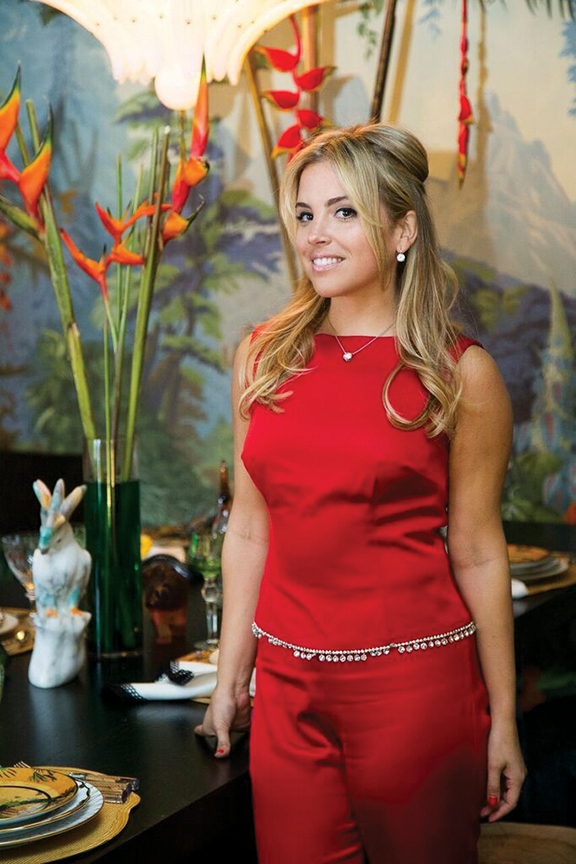
Maximalism has been embracing “the more” of design since the 1980s with the creation of Memphis Milano in the 1980s, a legendary postmodern design group that championed the style and made it a staple in the industry. Author and design journalist Claire Bingham notes in her book, More is More: Memphis, Maximalism and New Wave Design, that after experiencing the “riot of color and pattern” indigenous to styles like Memphis, the 90s saw a rise of Minimalism, a stark contrast with designers such as John Pawson and Calvin Klein focusing on purity and simplicity.
“There has always been minimal versus maximal throughout time, but the rise of the Memphis/80s style was a kickback from the elegance of mid-century design and a desire to rethink how objects could look,” Bingham writes. Although minimalism has been an ever-developing presence in today’s world, the Memphis style and Maximalism as a whole has found its way back into the hearts of young impressionable designers looking to become expressive in a more vivacious, free-spirited way.
In More is More, Bingham spoke with a host of contemporary designers, as well as Peter Shire and George Snowden, some of the original founders of the Memphis group, who truly embrace and understand the spirit of Maximalism. “It’s not so much to do with a style,” she says. “Maximalism could look like anything — romantic and frilly, graphic patterns, disco … It’s like playing dress up for the home.” To quote the vivacious Iris Apfel, “more is more and less is a bore.”
Famed New York designer Sasha Bikoff was dubbed the “interior designer for the young and wealthy” by The New York Times. Bikoff affirms that she was at the forefront of Maximalism’s revival when she started her firm seven years ago, a revival she credits to the growing millennial culture. She says that like anything in history there’s an action and a direct reaction. Instead of creating simplistic looks that can be easily replicated for the masses, younger designers and people want to create spaces and live within spaces that are unique, that share a likeness of themselves, a desire that has stemmed such creative outlets as Instagram, Pinterest and other social media channels.
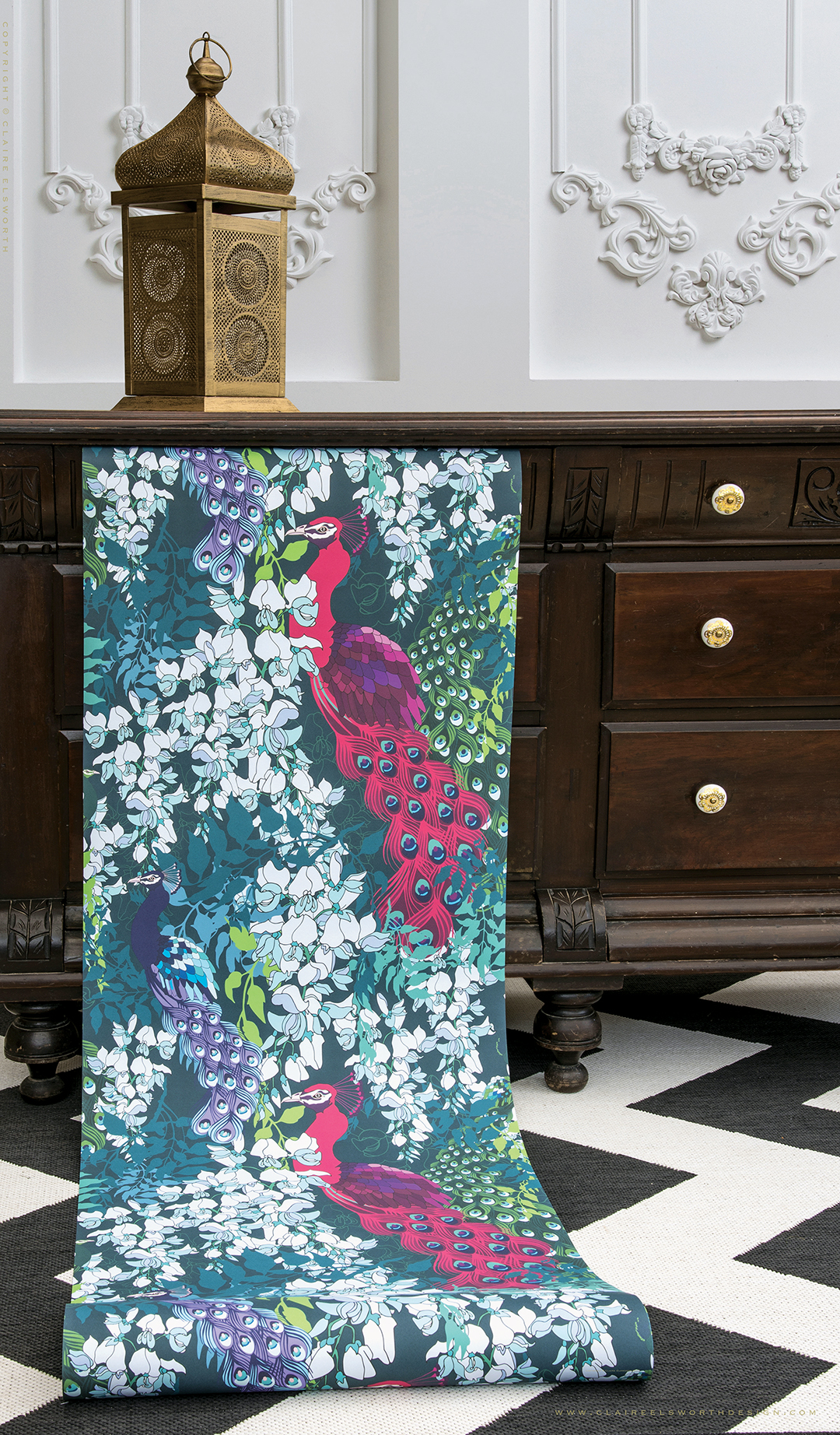
Claire Elsworth
Photo courtesy © Claire Elsworth 2017
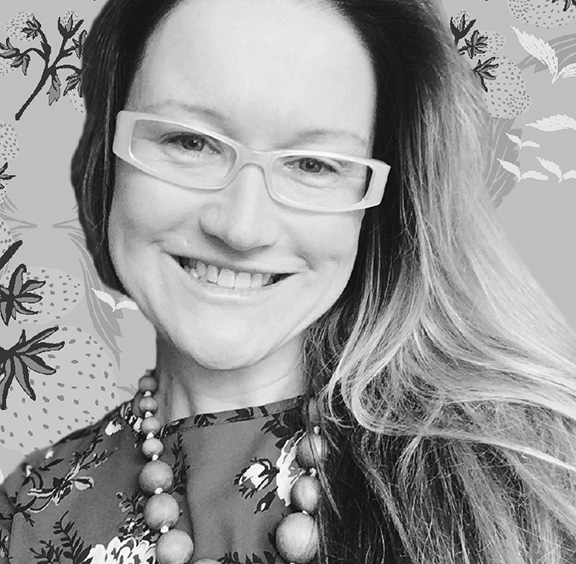
To heighten the effectiveness of Maximalism, Bikoff says that one of the most important aspects of this style type is the use of color, noting that in her own designs color helps bring out an emotional response. She notes that it’s important to surround yourself with colors and objects, patterns, and textures that make us happy and bring life into your home. “The same way I dress with fashion — as my fashion choices are bold and confident — is how I want my rooms to feel,” she says.
Just like personal fashion, each Maximalist designer and design is different and based on both creative taste and what each designer finds inspiring. For example, Bikoff’s aesthetic can be derived from 18th-century French Rococo, 1960s Space Age Modern, 1970s French Modernism and 1980s Italian Memphis Milano. An affinity for new experiences, her love of travel helps add to her ever-developing color palette, which you can see in her projects. “Marrakesh is a place I travel to all the time, and the colors of the spices you find there are so amazing you can see them all in a color palette, from bright turmerics to smoky paprikas,” Bikoff says.
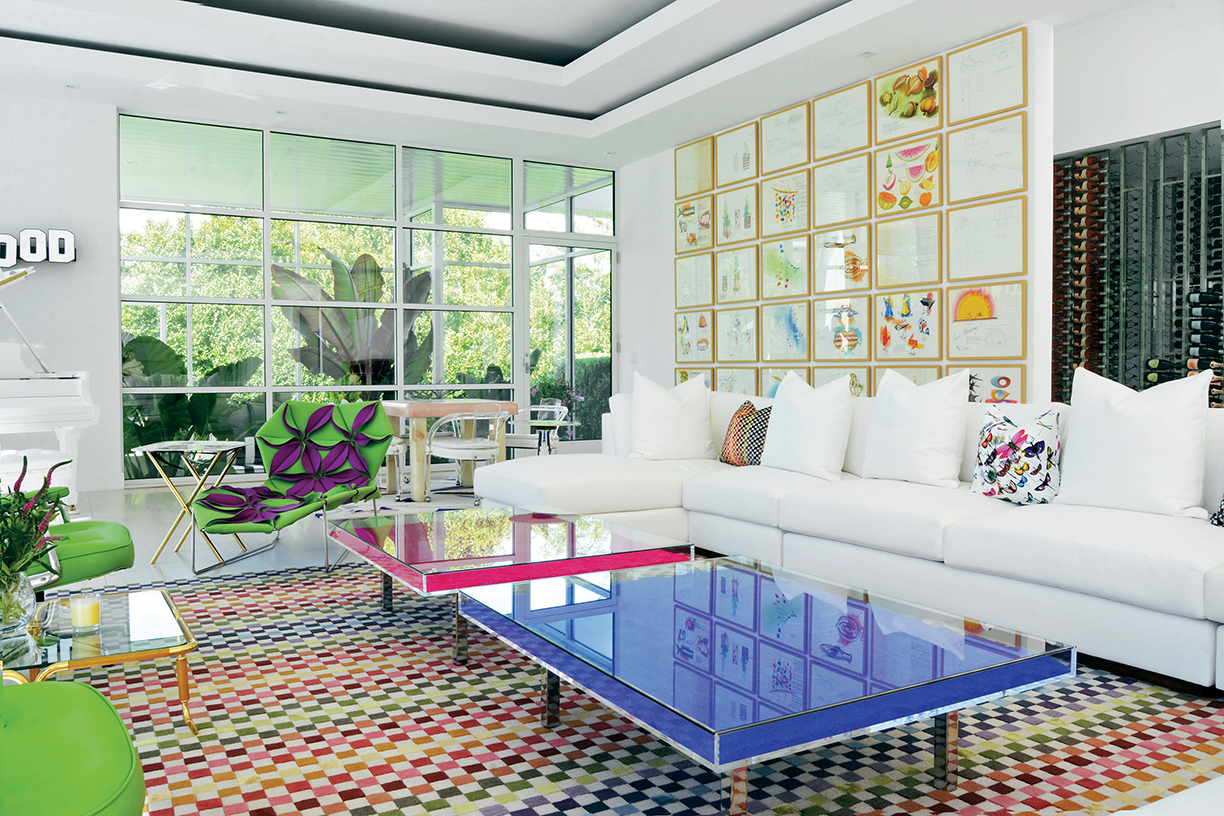
Photo courtesy Claire Bingham.
Elsworth’s firm focuses on luxury wallpaper and home décor, and is known for intricate yet bold Maximalist features in every design. She hand sketches her designs, which are inspired by her short concept stories about an imaginary Duchess called Violacea Macrobothrys and her beautiful old aristocratic house — “a Maximalist treasure trove paradise!” she says. These stories weave through six collections of wallpapers and cushions, displaying both Elsworth’s love for drawing as well as her favorite aspects of Maximalism.
“I’ve always been drawn to anything ornately detailed, whether it be textiles, interiors, art, or historical architectural details,” Elsworth says. “So, I was naturally drawn to the Maximalist style long before I even knew there was a name for it.”
To embrace Maximalism in an everyday space there is a variety of ways one can incorporate aspects of the style. Bikoff says that some of the best Maximalist interiors are just showing off pieces from trips you’ve taken all in one space, even if they do not particularly go together. “The whole idea of Maximalism is that it’s the kind of space for a true collector, a space that tells a story.”
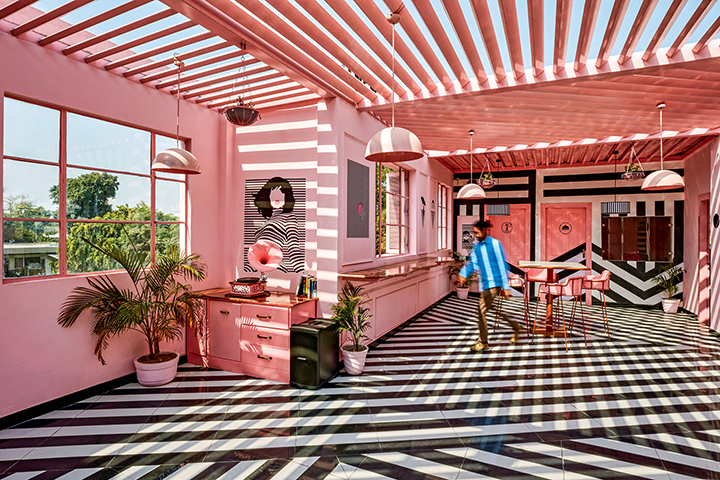
Photo courtesy Sasha Bikoff.
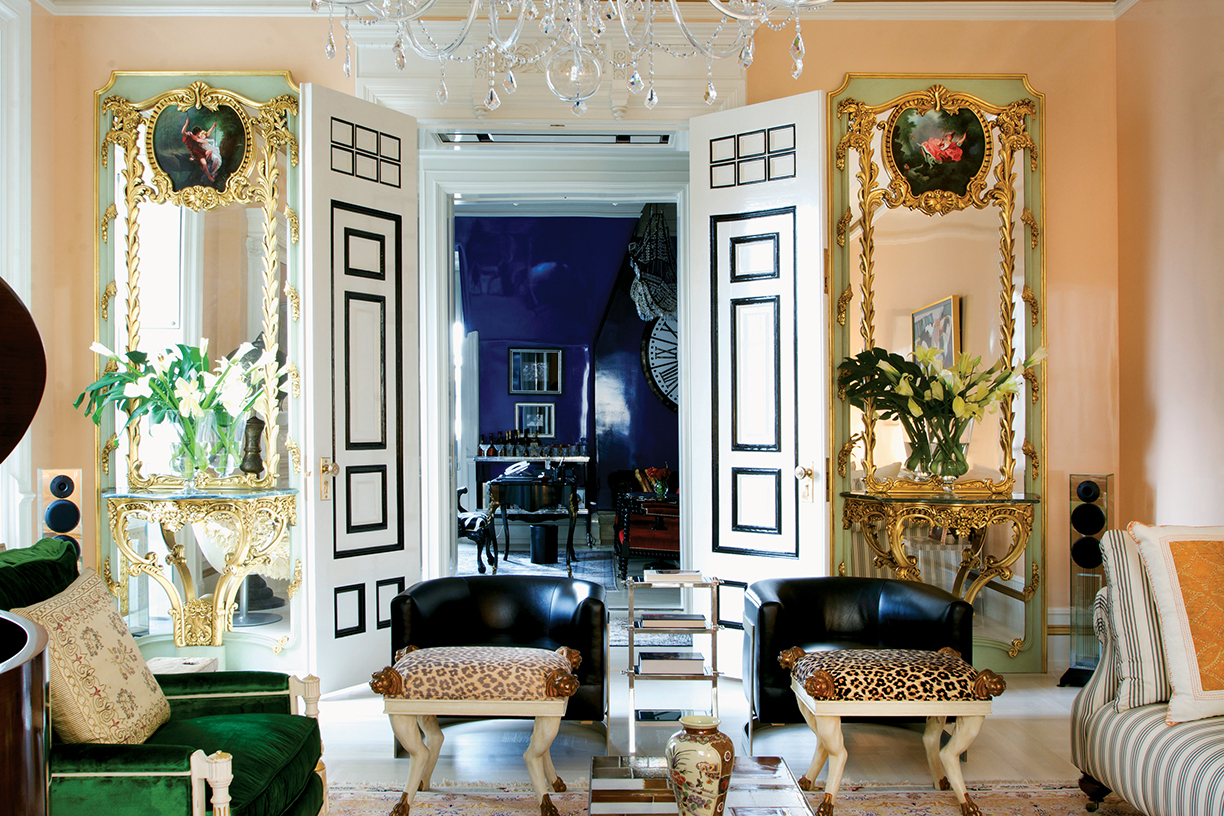
Photo courtesy Claire Bingham.
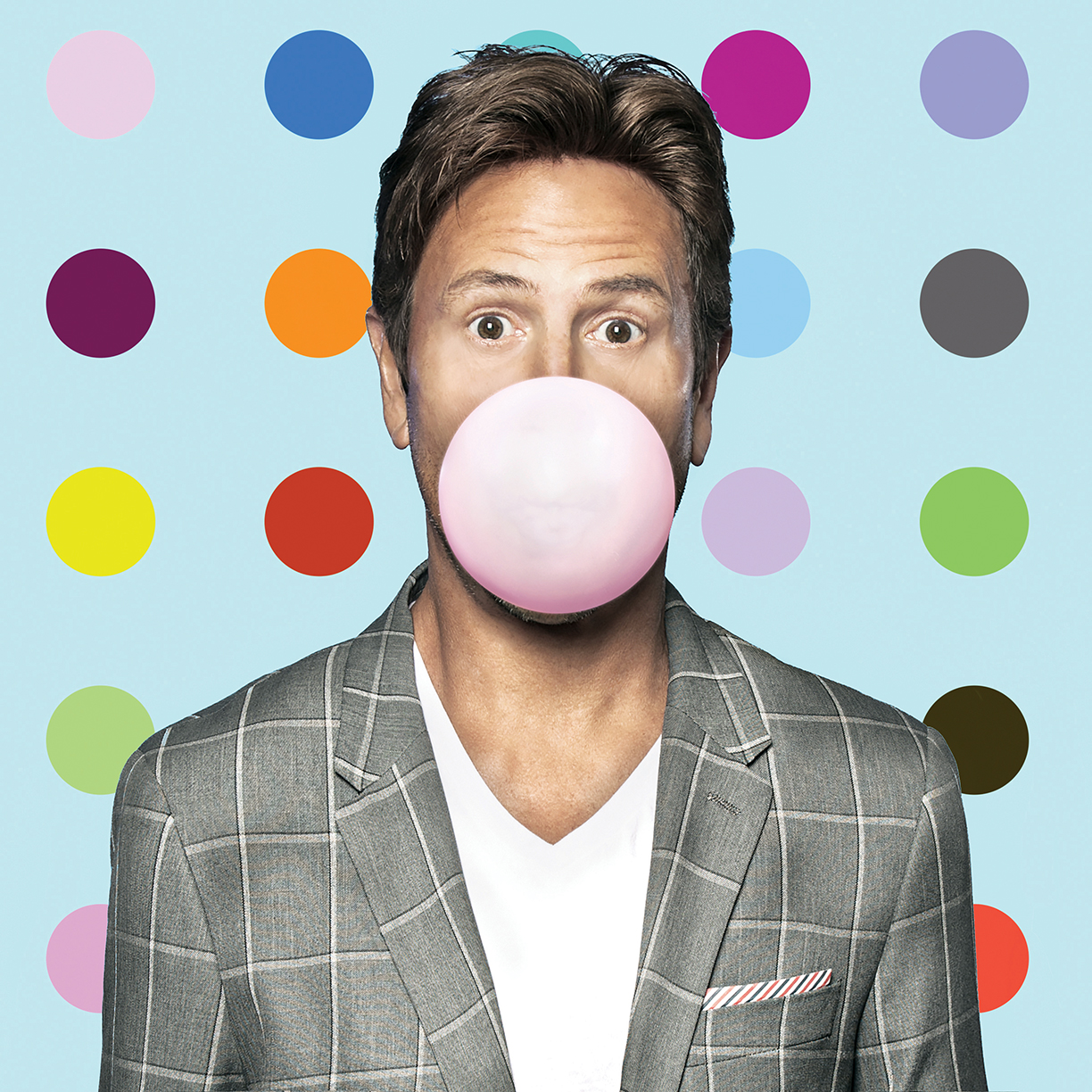
Known as the King of Pop Art, L.A.-based artist Nelson De La Nuez is one of the most sought-after pop artists working today. His work is regularly exhibited at prestigious art fairs, such as Art Basel Miami and Art Central Hong Kong, as well as promoted through partnerships and private collections, including a series of works for Warner Bros. to commemorate The Wizard of Oz’s 70th anniversary.
In an interview with De La Nuez, he discusses how the incorporation of images from American pop culture, today’s advertising, high-end branding and more have strongly influenced his artwork since the 1980s.
What kind of memories do you have from your childhood?
I was born in Havana and I came here to Southern California when I was seven years old, started first grade here. I still remember Havana, which I can remember back to when I was three years old. I took it all in. Fond memories of going to the beach, riding my bicycle around the neighborhood, doodling in the backyard.
How did your childhood affect you later on as a person, as an artist?
Well I’ve always been an artist, ever since I can remember. That kind of kept me entertained for hours, I would always get lost with [my art]. I love sports, but art has always been there for me. It was my escape. It was just a way to get away from everything.
Do you still use art to get away, now that it’s your career?
I’m always thinking 24/7 about what I am I gonna do, about ideas — so what I do is I jump on and go motorcycle riding and that kind of helps me come back again and revisit a piece or an idea, and look at something differently. What I was looking at a half hour ago looks different now, since I’m in a different state of consciousness, and I get to relax.
Material Girl
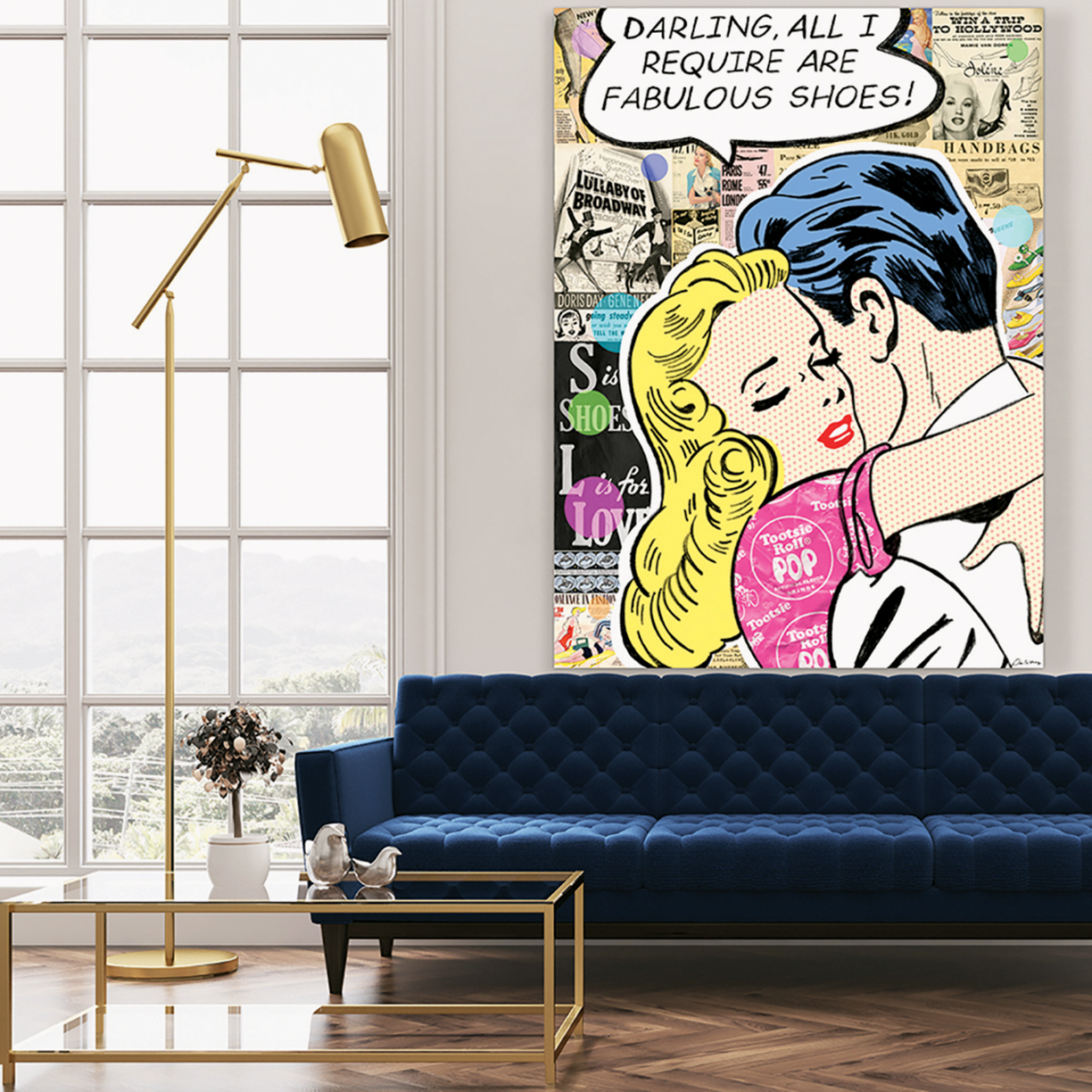
The Good Life
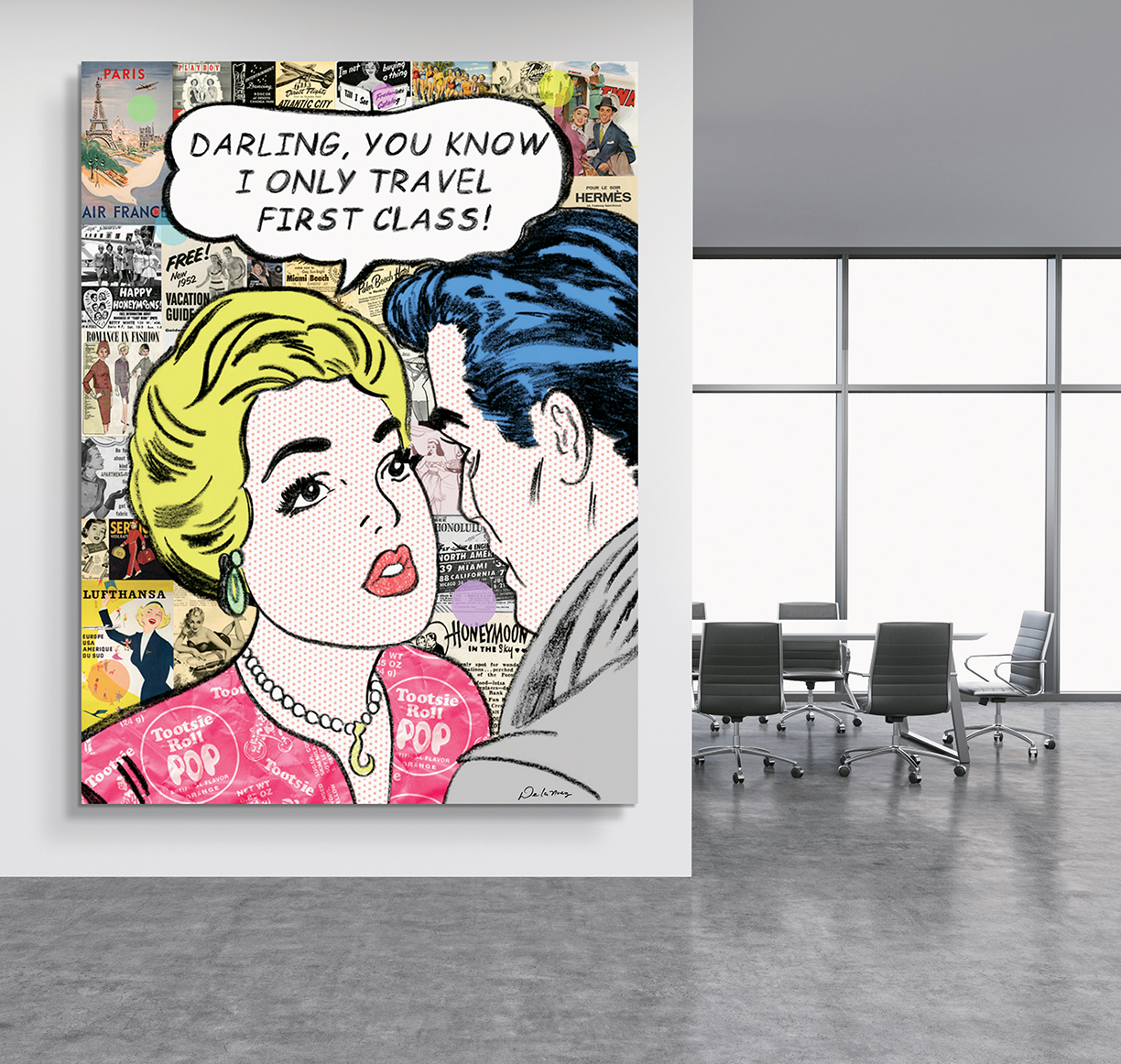
What kind of themes do you see from your childhood that are presented in your art now?
Most of what I do today is rooted in American themes from my childhood. I remember coming here [to America] and I remember seeing on TV the first Superman, TV commercials, the mascots — it all just spoke to me and I just absorbed it like a sponge.
How did these themes develop into your style?
The reason why I’m doing pop art is because of everything I observed early on when I came to this country. Living in
California is like living in a fantasy land when you come from a different country. There’s billboards, commercials, advertising, and you never know where the ideas come from. When I really think back, a lot of what I do today is really a reflection of what I was thinking and experienced when I was a kid.
Aside from your childhood, are there trends or present-day themes that inspire you?
I’m inspired by everything, literally. Every mundane object that you could think of I will look and see something there that I can maybe create into a piece of artwork. Whether it’s a billboard or a magazine ad, or an elusive train [of thought] I had the day before, I’ll ride it all the way down. I am really a byproduct of everything I’ve observed or experienced in my entire life. So I have this database in my subconscious where I can draw from.… Everything is art for me. It doesn’t necessarily need to be hanging on a wall, it could be fashion, it could be a song; everything is just an inspiration.
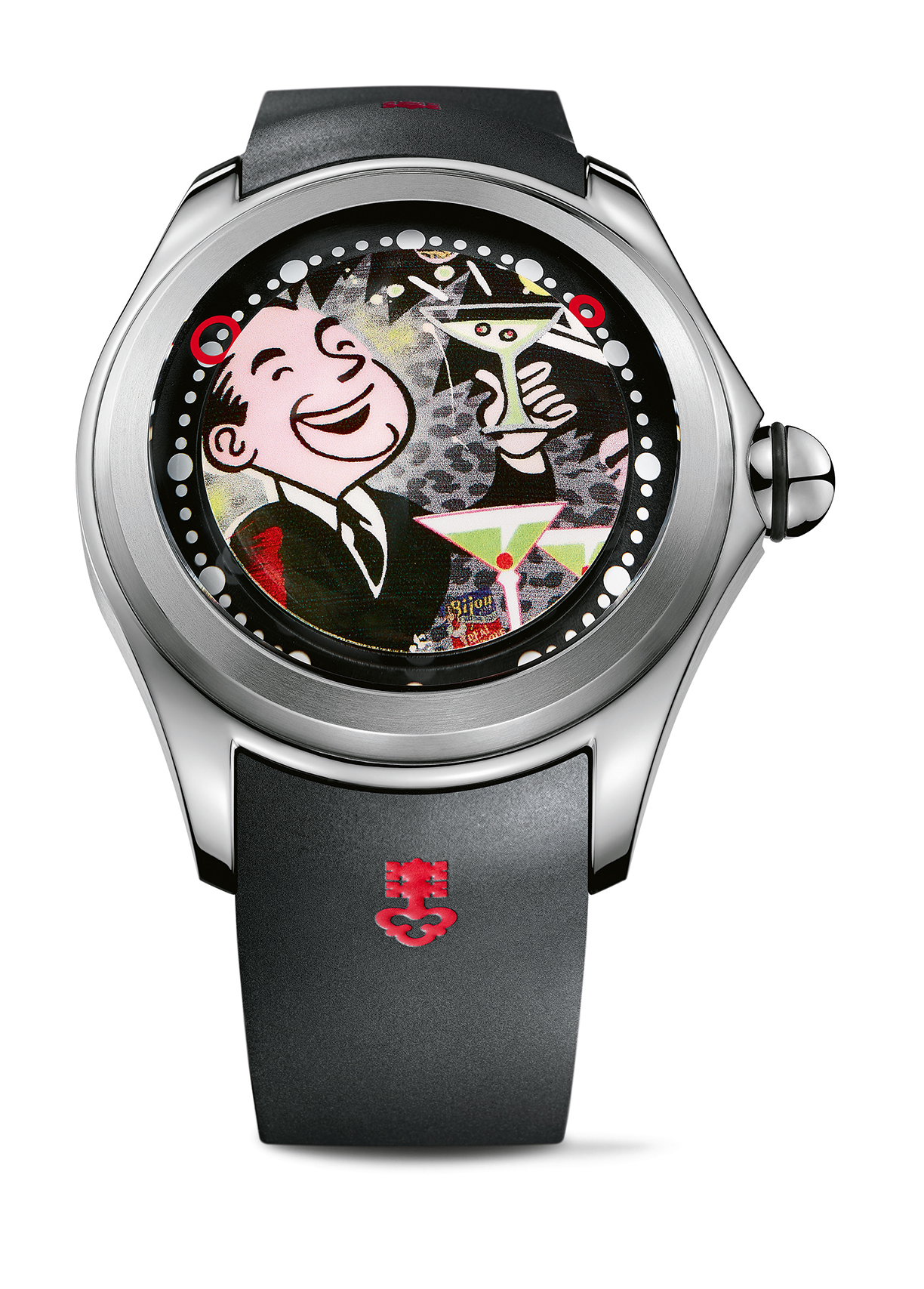
Corum Bubble Martini Watch
How does your art coincide with the clientele you usually work with?
Each partnership that I’ve done is
different, basically all with high-end brands. Each of them is unique and different; I just love working with high-end brands because it just puts my art on a different level and exposes me to a lot more people. Basically it provides a plateau to take my work to the next level and having the audience take a look at my work in a different way. That’s my audience, it’s always been a very well cultured, well traveled group that love high-end brands. It’s an audience that know what they want and how to express themselves, and they do that with my art.
What do you like most when people view your art in various forms?
I love when people react immediately. That kind of gives me a great deal of comfort. You put in all this energy and hard work and you don’t know what to expect. And they usually say “Yes, that’s the painting for me,” because it’s got legs, it speaks not just to them, but to a mass audience — it makes them happy, makes them smile, sometimes it makes them laugh. They know the perfect place that they want this for in their home. Some of them are drawn to a specific piece for no reason at all; they just relate to it.
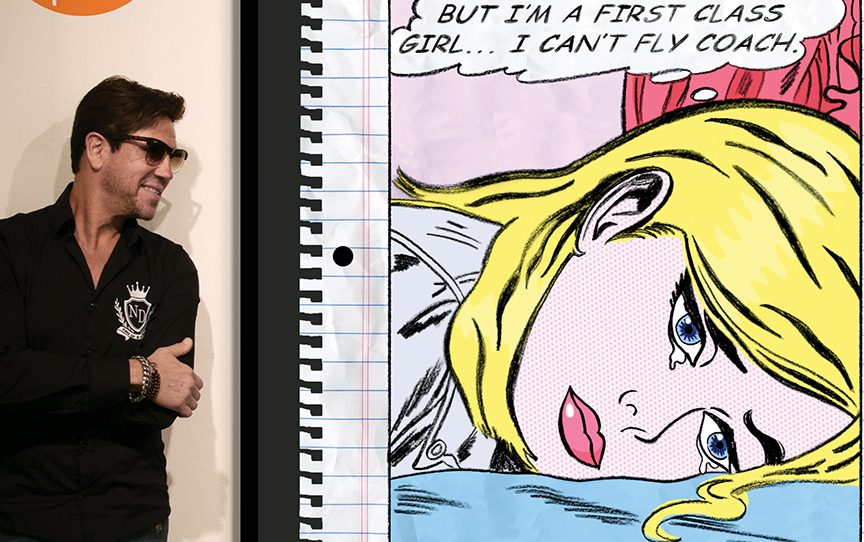
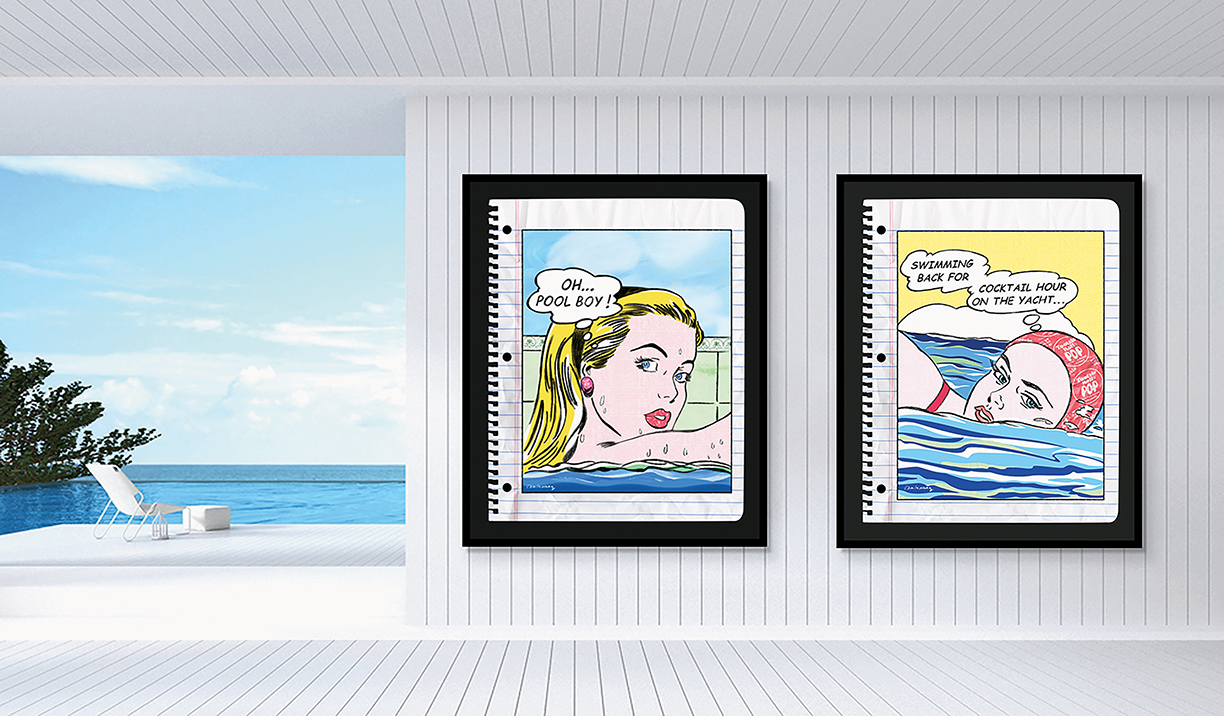
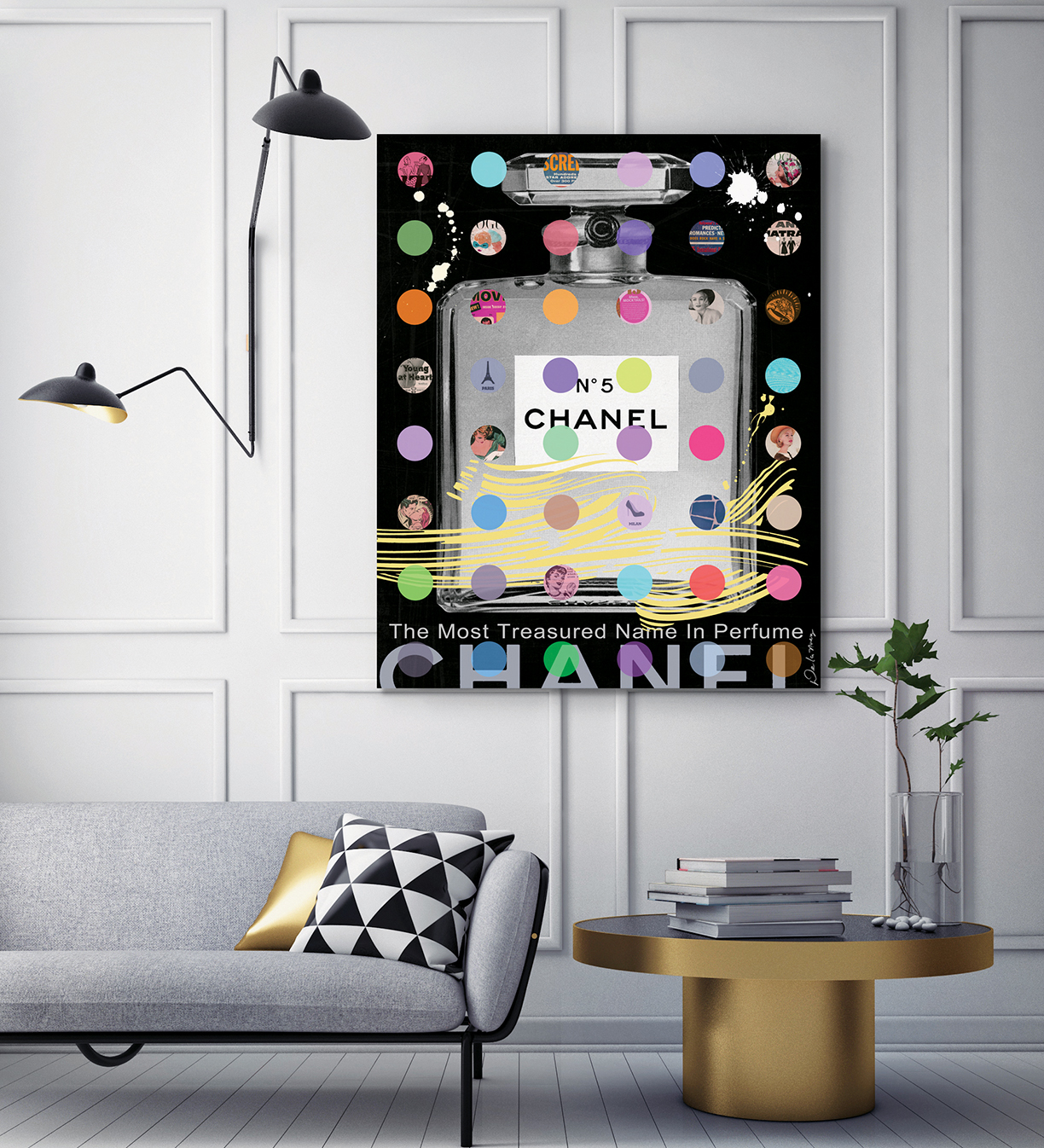
Upper Left: First Class Girl – LA Art Show 2019
Bottom Left: High Maintenance (Left) and Yacht Life (Right)
Above: Chanel No. 5 (Black)
What’s a project you’d love to work on in the future?
I would love to design something like an entire hotel design, the colors, the furniture, the wallpaper. The other thing that I would really love to do is work with a cruise ship to design their rooms, or design the entire ship using my art. That’s kind of what I get excited about most, getting to do [art] on a large massive level, where it’s not just a small project, but a huge undertaking, to take it to another level.
Any advice for aspiring artists?
The number one piece of advice I can give is that you have to be committed to your craft. You need to find out who you are and what message you want to put out into the world, then you have to be good enough and clever enough and have something unique and different. You can’t just be a part-time artist, you have to do it full time and it takes a while.… Good art is subjective, but when you have people paying sometimes hundreds of thousands of dollars for your art, you know that you’ve done something right.
In luxury apartment buildings and community residences, amenities are everything. Without a vast array of opportunities for residents to live in the ultimate luxury, the quality drops. With this in mind, developments have been finding new and creative ways to elevate the standard of luxury living when it comes to amenities — and it’s through art itself.
Luxury residential buildings are fostering creativity for their child residents. Through different art-focused programs and amenities, the opportunities for children to explore their imagination are now limitless.
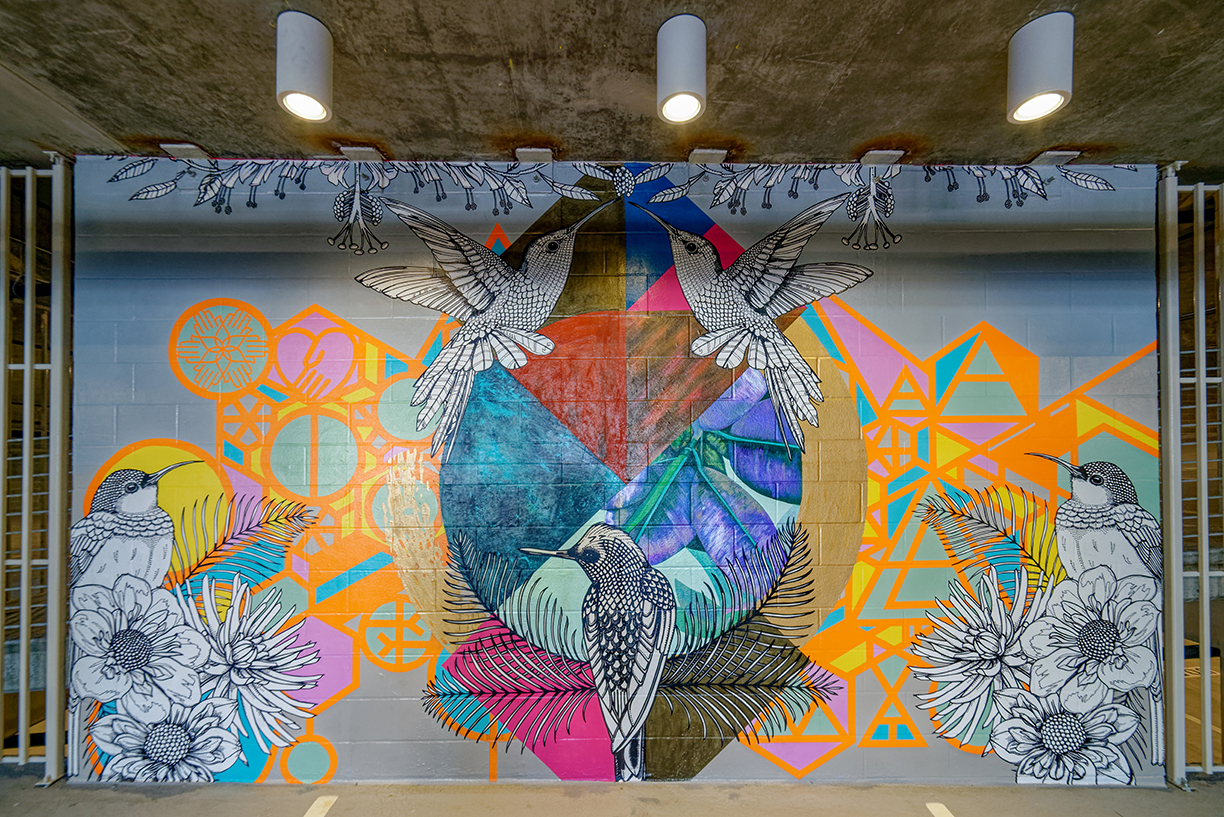
Photo courtesy of LoveWell Creative
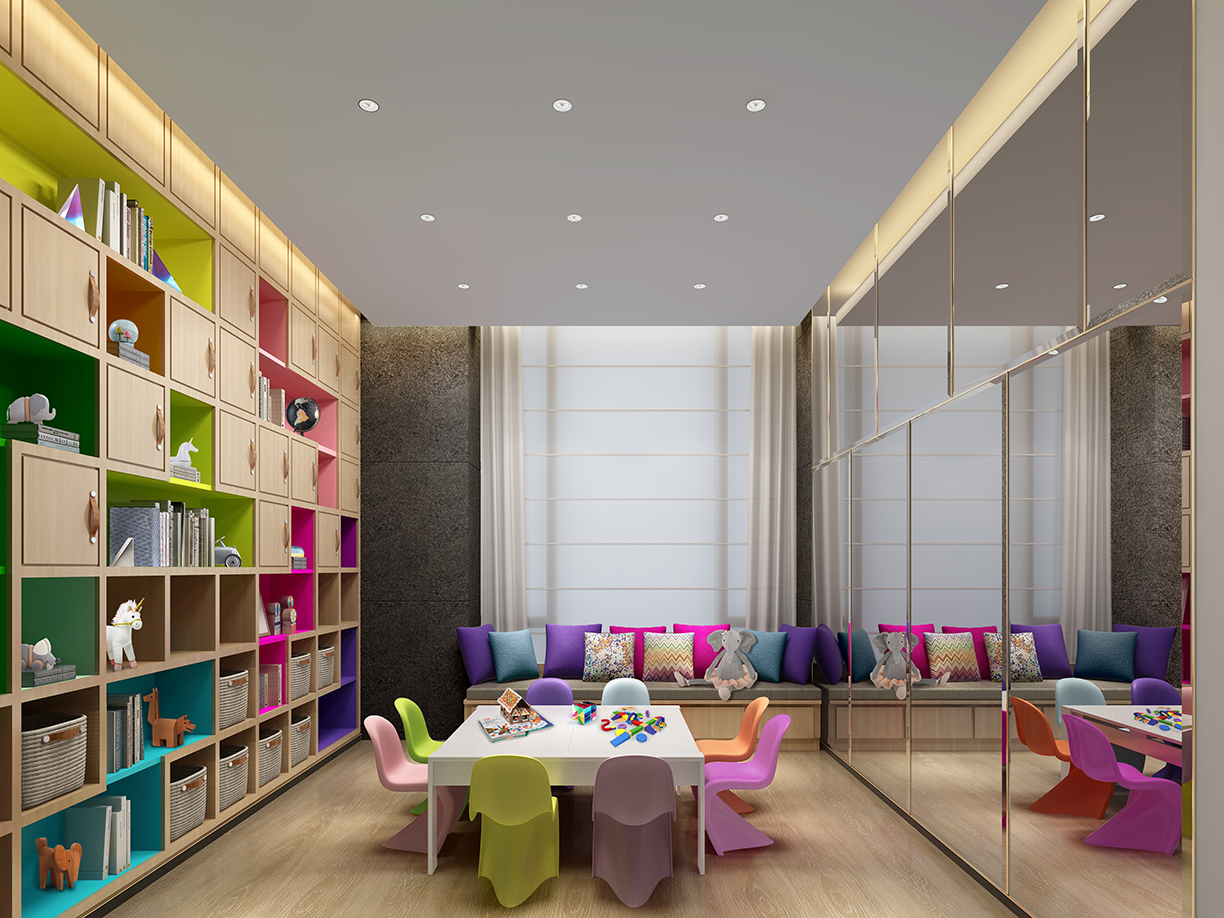
Photo courtesy of THREE MARKS
The luxury Manhattan condo 277 Fifth Avenue, in partnership with the global luxury service brand LIVunLtd, is providing opportunities for children to participate in music classes, dance classes, arts and crafts. The playful atmosphere in the rooms inspires children to have fun and get creative.
Meanwhile, at the Brickell City Centre in Miami, the Reach and Rise luxury condominiums have installed amenities for children with an artistic twist. While some walls have screens for interactive games, others are blank and allow for children to write and draw. The colorful furniture allows for creativity to flourish.
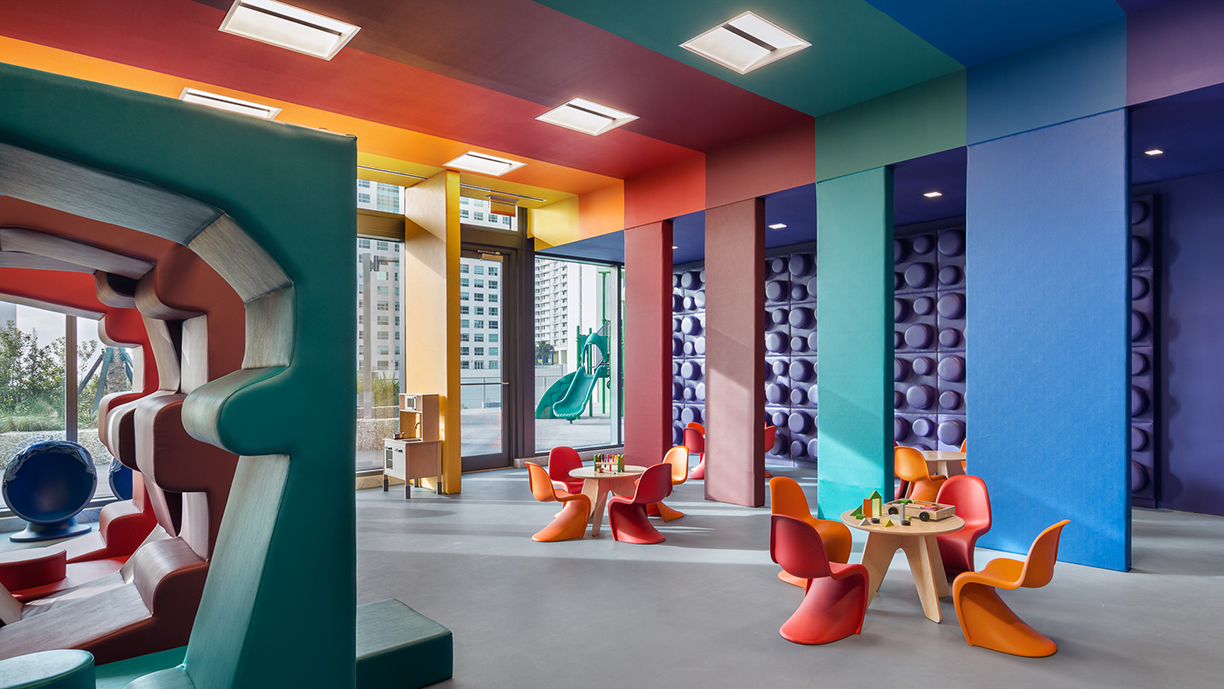
Photo courtesy of Swire Properties Inc
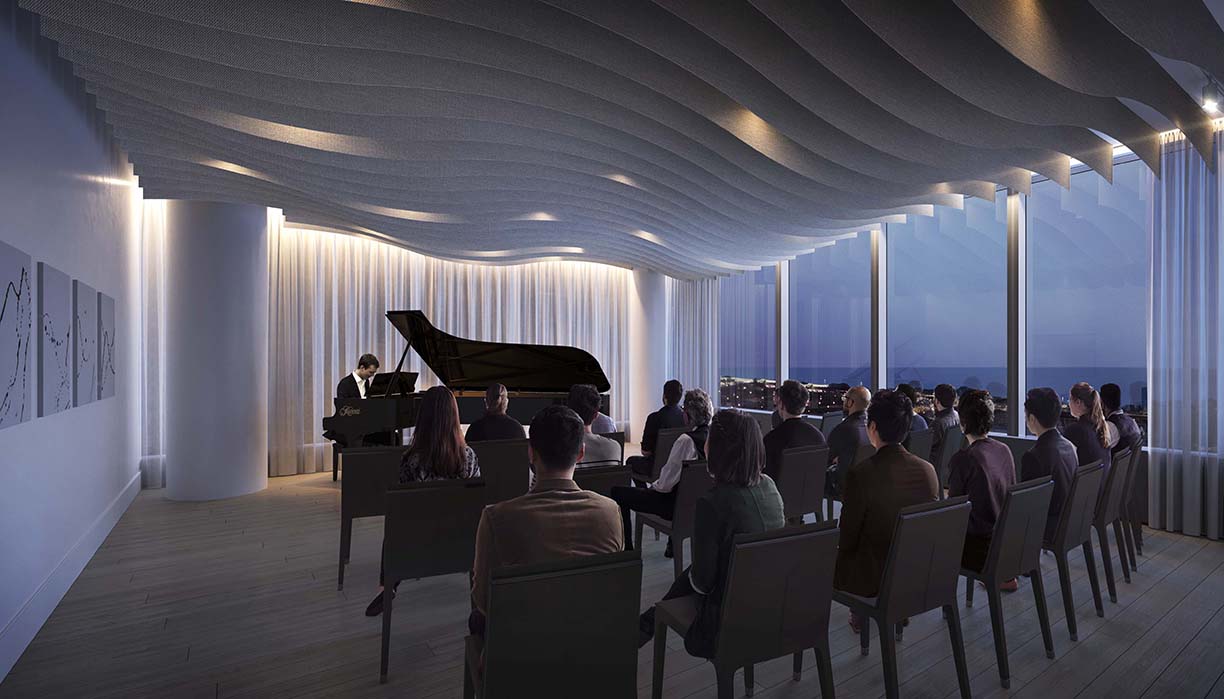
Photo courtesy of Miller Hare
But these amenities aren’t always exclusive to children — at 1000M in Chicago, the residents will have access to both a music conservatory and a sound studio. The soundproof room is perfect for anyone looking to advance their skills or begin learning a new instrument. Either way, both children and adults can now feel artistic and inspired.














